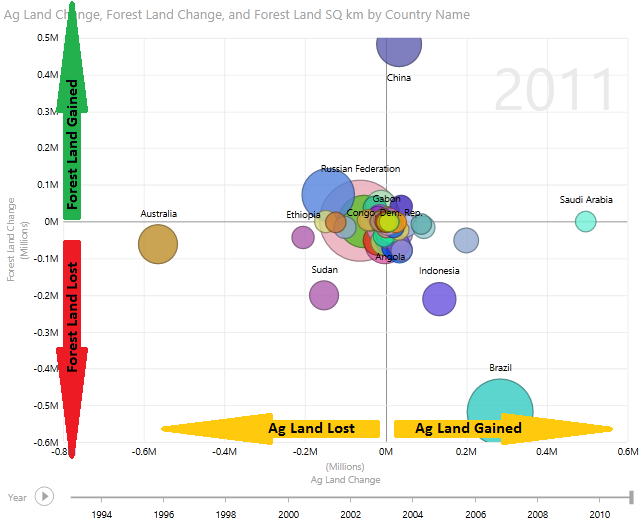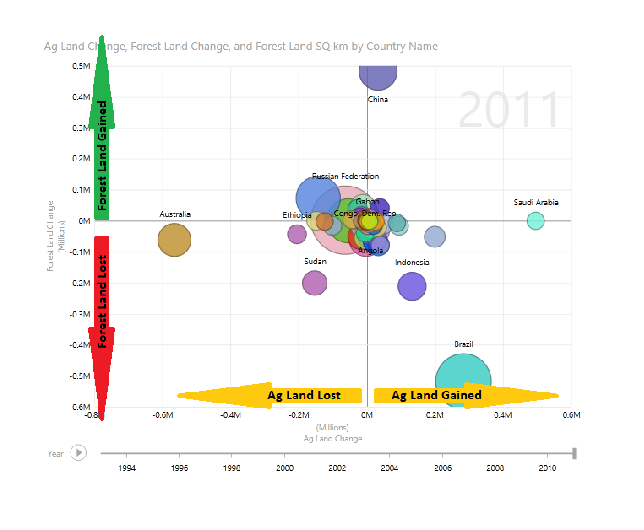World Bank Forest and Agricultural Data Mashed Up to Visualize Trends
The World Bank provides open data about development in countries across the globe including data about agricultural land and forest area by country over time. Combining both of these data sets with their land area data can give new insights into the relationship between agricultural and forestry land over time.
The trends of forest land and agricultural land over time can be visualized effectively using an interactive scatter chart. For the Open Data Bits tutorial about using and understanding chatter charts, click here. For this example, the cumulative changes in square kilometers from 1992-2011 are visualized with forestry land on the y axis and agricultural land on the x axis. The size of the bubble represents the total forest land area of the country:
Most countries are clustered near the center of the scatter chart, and there are some interesting countries that stand out as having the most drastic changes. Notice that China is in the upper right quadrant which indicates gains in both forest and agricultural land. With a booming economy and large population, a gain in agricultural land is not a surprise. A gain in forest land might surprise a few people, but a quick internet search revealed that China has been implementing a reforestation program for decades. In fact, their total forest land has continued to increase in 2014.
Saudi Arabia is showing the greatest increase in agricultural land (total square kilometers). Did you think that Saudi Arabia was all desert? Think again, as the Saudi government has a program to develop viable agricultural land from desert which has been making gains over the last three decades.
Australia and Sudan appear to be losing both forest and agricultural land. Changes in Australian agriculture and urban sprawl have contributed to Australia’s agricultural land loss, and lost forest land may be due to land usage policies. Sudan has seen a loss of forest land following decades of war.
Brazil and Indonesia both show gains in agricultural land and declines in forest land. This 2014 article claims that Indonesia has now surpassed Brazil in total deforestation.
Combining different data is easier than ever with advanced business tools that are able to mash up and analyze large volumes of data. Open Data Bits provides free resources to help you mash up open data from different places.


